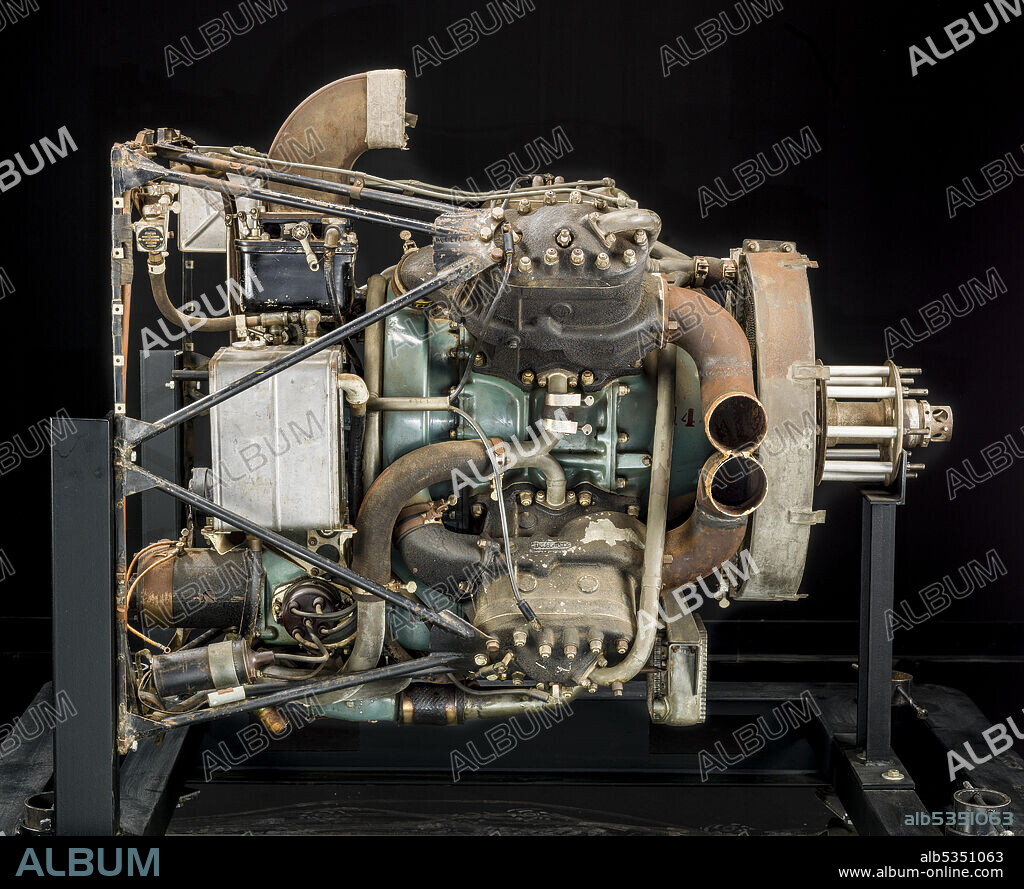alb5351063
GENERAL MOTORS. General Motors X-250, Radial 4 (8) Engine, ca. 1940. Creator: General Motors.

|
Add to another lightbox |
|
Add to another lightbox |



Author:
Title:
General Motors X-250, Radial 4 (8) Engine, ca. 1940. Creator: General Motors.
Caption:
A direct-drive, liquid-cooled, supercharged, two-stroke cycle engine, this General Motors engine was a very unusual design incorporating four cylinder blocks, each containing two cylinder bores with a common combustion chamber. At least one application was a small radio controlled target aircraft, and it also powered an Oldsmobile Eight automobile. Flight testing by famed racing and test pilot Tony LeVier successfully continued through 1940 as high as 7.6 km (25,000 ft.) in a Cessna Airmaster C-165, but other pressing war priorities led to termination of the project. A 1942 engineering report written by GM's Research Laboratories, led at the time by its highly regarded director Charles F. Kettering, stated that the engine had excellent power/displacement and power/weight ratios, low fuel consumption, and very low vibration characteristics. Removed from the Cessna in June 1946, the aircraft was later refurbished and flown again.
Personalities:
Credit:
Album / Heritage Art/Heritage Images
Releases:
Model: No - Property: No
Rights questions?
Rights questions?
Image size:
6600 x 5386 px | 101.7 MB
Print size:
55.9 x 45.6 cm | 22.0 x 18.0 in (300 dpi)
Keywords:
1940S • 20TH CENTURY • AEROPLANE • AIR AND SPACE MUSEUM • AIR TRANSPORT • AIRCRAFT • AIRPLANE • ALUMINIUM • ALUMINUM • AMERICA • AMERICAN • AVIATION • CENTURY • CERAMIC • CHEVROLET DIVISION • COLOR • COLOUR • COMPANY • COPPER • COPPERWORK • COUNTRY • DECADE • EDUCATION • EDUCATIONAL INSTITUTION • ENGINE • FLIGHT • FORTIES • GENERAL MOTORS COMPANY • GENERAL MOTORS CORP. • GENERAL MOTORS CORPORATION • GENERAL MOTORS • GLASS • GM CORP • INDUSTRIAL • INDUSTRY • IRON AND STEEL • IRON_AND_STEEL • LOCATION • NASM • NATIONAL AIR AND SPACE MUSEUM • OBJECT • OBJECTS • PAINT • PHENOLIC • PROPULSION • PROPULSION-RECIPROCATING & ROTARY • RECIPROCATING MOTION • ROTARY ENGINE • RUBBER • SCIENTIFIC INSTITUTION • SMITHSONIAN INSTITUTION • STEEL INDUSTRY • STEEL • TECHNOLOGY • TRANSPORT • TRANSPORTATION • UMBRELLA • UNITED STATES OF AMERICA • UNITED STATES • USA
 Pinterest
Pinterest Twitter
Twitter Facebook
Facebook Copy link
Copy link Email
Email

